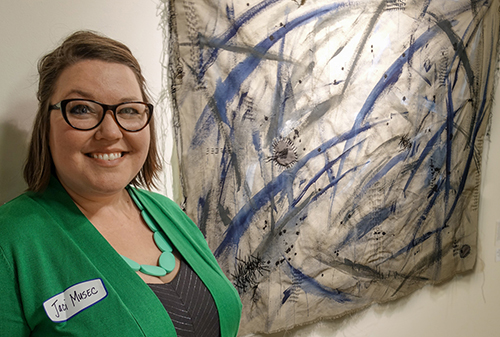
DOUG AND EILEEN LEUNIG
The American Psychological Association reports a link between chronic stress and the six leading causes of death: heart disease, cancer, lung ailments, accidents, cirrhosis of the liver and suicide. More than 75 percent of all physician office visits are for stress-related ailments and complaints.
There are many tools that the medical industry uses to combat the effects of stress, but one practice in particular stands out for being effective and at the same time for being relatively unknown. That is the practice of using art and arts therapy to lessen the devastating effects of stress in Post Traumatic Stress Disorder (PTSD), traumatic brain injury (TBI) and depression.
Art Therapy is defined as a form of psychotherapy involving the encouragement of free self-expression through painting, drawing or modeling and is used by trained professionals to help children, adolescents and adults explore their emotions, improve self-esteem, manage addictions, relieve stress, improve symptoms of anxiety and depression and cope with a physical illness or disability.
The American Art Therapy Association found that 45 minutes of creative activity significantly lessens stress in the body, regardless of artistic experience or talent. Even if you suck at art, spending time drawing, coloring, doodling, shaping clay, writing in a journal will reduce stress. It works partly through the process of building new neural pathways in the brain that create different insights and perceptions, but it also works because creating art is just plain fun and rewarding.
It has been estimated that 11-20 percent of veterans serving in foreign wars have suffered Post Traumatic Stress Disorder and traumatic brain injury. The Veteran’s Administration has embraced the arts and arts therapy as a way to help veterans, service members, and military families to cope.
For example one organization, The Armed Services Arts Partnership, helps veterans, service members and military families reintegrate into the communities through the arts. They offer classes and weekend workshops that are focused on promoting expression, skill-building and social support in the following art forms: stand-up comedy, improv, storytelling, creative writing and community arts workshops.
A recent study in the United Kingdom looked into the benefits of communal drumming for people struggling with depression. The researchers found that those who engaged in drumming fared better than the control group who attended social events without dancing or music-making elements. Drumming had a positive impact on mood.
“Music can touch the parts of hurt buried too deep to uncover in any other way. Music can tell a story for which words don’t or can’t arise,” says Natasha Green, founder of Peoria Drum Circle. “Inhibitions I thought would never dislodge have been worked out. I have become more aligned with my own true nature. Maybe some call it a ‘true self.’ Whatever it is, I feel free when I drum.”
The bottom line is that the arts are good for us. They can heal as well as entertain. They enhance our quality of life as individuals, as communities and society as a whole. As Peoria and Central Illinois become a greater center of healing, the arts will play an even stronger, greater role in our lives.

Jaci Musec, one of the artists in the February show “Piece of Mind: An Exhibit on Mental Health” by the Emerging Artist Collective at the Peoria Public Library Main Branch said, “This piece is a physical manifestation of a panic attack and its residual effects. As an artist living with anxiety and depression, I find that creating helps me express and process my emotions.”
